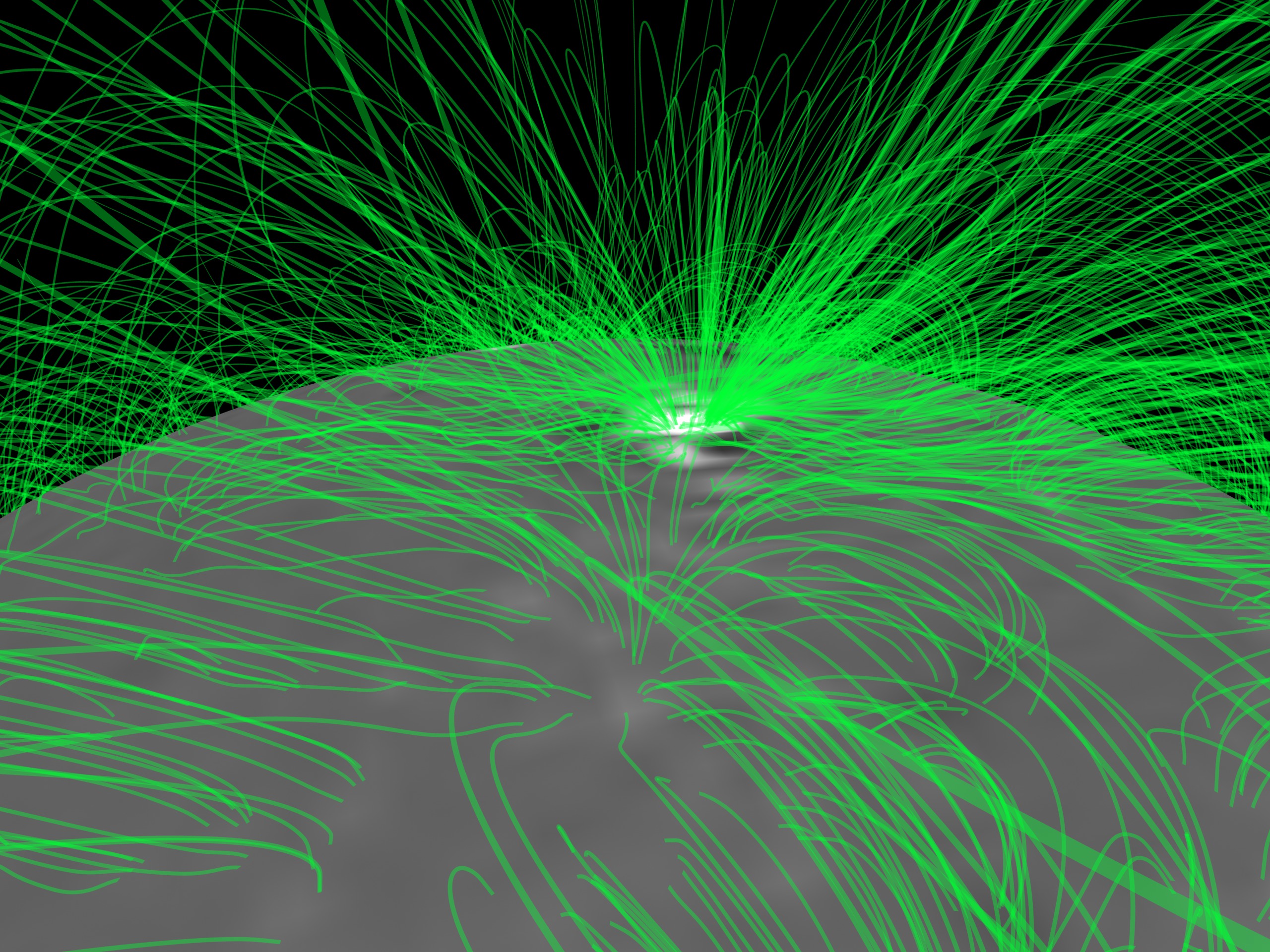Hot Lines
Magnetic field lines dance above the surface of the sun. Called coronal loops, these lines are difficult to observe from afar, since they are invisible. Scientists can observe them in two ways: by watching the visible solar material that flows along the lines or by modeling them using computer simulations. Studying these formations help us understand the way energy travels on and around the sun. The Solar and Heliospheric Observatory, or SOHO, is a sun-observing spacecraft that can measure and depict distortions in the sun’s magnetic field. Using data collected by the spacecraft, scientists created a virtual, 3D model of the field lines. Watch the video to explore the loops.

Scientists model the intense magnetic fields around the sun.
Watch this video to see the waves of hot, charged gas that loop around the surface of the sun.

The sun's outer atmosphere, called the corona, is 1,000 times hotter than the sun’s surface.

Coronal loops are only visible in ultraviolet light. The loops have been colored green in this model.

Coronal loops are often found near sunspots, such as the one seen in this image captured by SOHO.

Launched in 1995, SOHO is a joint mission between NASA and the European Space Agency.
Credits
Please give credit for this item to:
NASA's Goddard Space Flight Center
-
Animator
- Tom Bridgman (Global Science and Technology, Inc.)
-
Scientists
- Michael Kaiser (NASA/GSFC)
- Therese Kucera (NASA/GSFC)
- Russ Howard (NRL)
- Don Michels (NRL)
- Marc L. DeRosa (LMSAL)
-
Writer
- Aviva H. Rutkin (USRA)
Release date
This page was originally published on Tuesday, July 9, 2013.
This page was last updated on Wednesday, May 3, 2023 at 1:52 PM EDT.
